December 15, 2025 10:43 am
The Disaster Management Act, 2005 is a landmark legislation enacted by the Government of India to provide a comprehensive framework for disaster preparedness, mitigation, response, and recovery. It establishes institutional mechanisms at the national, state, and district levels to create a coordinated approach for disaster management across the country.
This Act emphasizes proactive risk reduction, preparedness, and resilience-building while ensuring effective response mechanisms during emergencies. It aligns with global frameworks like the Sendai Framework for Disaster Risk Reduction (2015–2030).
Background of the Disaster Management Act, 2005
The Disaster Management Act, 2005 was enacted in response to India’s increasing vulnerability to disasters, both natural and human-made. The Act provides a legal and institutional framework for disaster risk reduction, preparedness, response, and recovery, marking a paradigm shift from reactive to proactive disaster management in the country.
Factors Leading to the Enactment of the Act
- Frequent Disasters in India:
- India is highly prone to a wide range of disasters due to its geographic diversity and climatic conditions:
- Natural disasters like earthquakes, floods, cyclones, and droughts affect millions annually.
- Human-made disasters, including industrial accidents (e.g., Bhopal Gas Tragedy) and urban fires, further add to the risk.
- India is highly prone to a wide range of disasters due to its geographic diversity and climatic conditions:
- Impact of the 2001 Gujarat Earthquake:
- The devastating earthquake in Bhuj, Gujarat, claimed thousands of lives and caused significant economic and infrastructural damage.
- The tragedy highlighted the lack of institutional frameworks for disaster preparedness and response at the time.
- Indian Ocean Tsunami (2004):
- The 2004 tsunami caused massive destruction along India’s southeastern coastline, emphasizing the need for an integrated disaster management framework.
- This event underscored the urgency of having a comprehensive law to address all aspects of disaster management, including prevention, mitigation, and post-disaster recovery.
- Global Initiatives and Commitments:
- India’s participation in global frameworks like the Yokohama Strategy (1994) and the Hyogo Framework for Action (2005–2015) created momentum for strengthening disaster risk management policies.
- The need for alignment with global disaster risk reduction goals became a driving force behind the legislation.
- Existing Gaps in Disaster Management:
- Prior to the Act, disaster management in India was primarily reactive and response-driven, focusing mainly on relief and rehabilitation.
- There was an absence of:
- A legal framework for disaster risk management.
- Institutional mechanisms for coordinated response.
- Funding structures to support disaster mitigation and preparedness.
Development Process of the Act
- High-Powered Committees:
- In the late 1990s and early 2000s, several high-powered committees were formed to suggest improvements in disaster management policies.
- These committees recommended the establishment of dedicated institutions and legal provisions for disaster management.
- Recognition of a Holistic Approach:
- The focus shifted from reactive relief measures to a proactive approach, encompassing disaster prevention, mitigation, preparedness, and capacity building.
- Legislative Efforts:
- The draft legislation for the Disaster Management Act was prepared and deliberated upon in the early 2000s, incorporating inputs from experts, policymakers, and international best practices.
- Passage of the Act:
- The Disaster Management Act was passed by the Indian Parliament in December 2005, coming into effect on January 1, 2006.
Key Milestones Influencing the Act
- National Policy for Disaster Management:
- The Act served as the foundation for India’s National Policy on Disaster Management (2009), which provides a framework for integrating disaster management into development planning.
- Establishment of Institutions:
- The Act led to the creation of key disaster management institutions:
- National Disaster Management Authority (NDMA).
- State Disaster Management Authorities (SDMAs).
- District Disaster Management Authorities (DDMAs).
- The Act led to the creation of key disaster management institutions:
- Alignment with International Frameworks:
- The Act positioned India to align its disaster management practices with global initiatives like the Sendai Framework for Disaster Risk Reduction (2015–2030).
Key Features of the Disaster Management Act, 2005
- Objective:
- To establish policies, plans, and institutional frameworks to reduce disaster risks, respond to disasters effectively, and promote a culture of preparedness and resilience.
- Scope:
- Applies to all forms of disasters, including natural (earthquakes, floods, cyclones) and human-made (industrial accidents, chemical spills, biological hazards).
- Institutional Framework:
- The Act creates a three-tier structure for disaster management:
- National Level: National Disaster Management Authority (NDMA).
- State Level: State Disaster Management Authority (SDMA).
- District Level: District Disaster Management Authority (DDMA).
- The Act creates a three-tier structure for disaster management:
- Disaster Risk Reduction and Preparedness:
- Focuses on risk identification, early warning systems, capacity-building, and public awareness campaigns.
- Powers and Functions:
- Grants central, state, and local governments the authority to take measures for disaster risk reduction and emergency response.
Key Institutions Under the Disaster Management Act, 2005
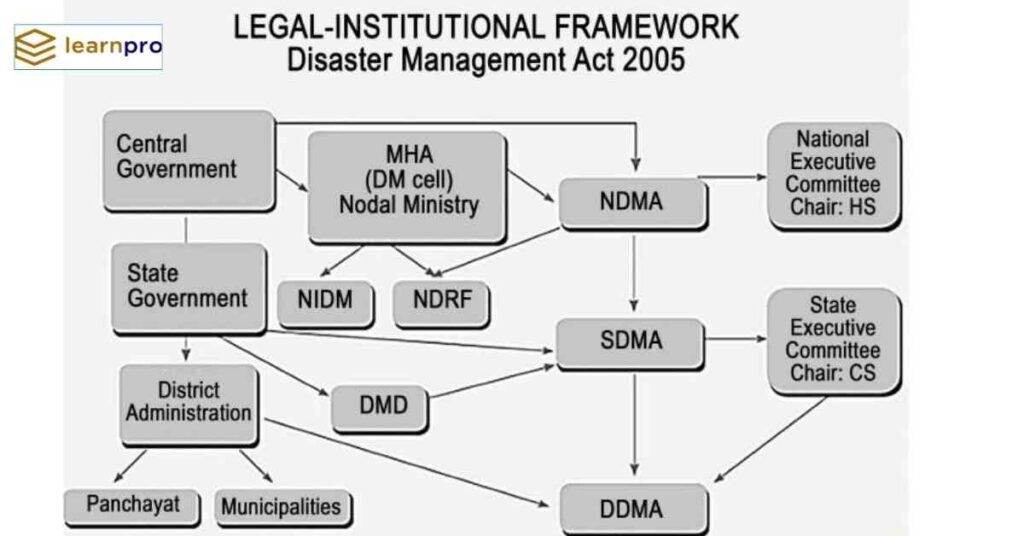
1. National Disaster Management Authority (NDMA):
The National Disaster Management Authority (NDMA) is the apex body in India responsible for formulating policies, plans, and guidelines for disaster management. Established under the Disaster Management Act, 2005, NDMA operates under the Ministry of Home Affairs (MHA), Government of India. Its primary objective is to build a disaster-resilient India by focusing on disaster prevention, preparedness, mitigation, and response.
Vision and Mission
- Vision: To foster a culture of preparedness, mitigation, and risk reduction, thereby building a safer and disaster-resilient India.
- Mission: To coordinate and promote holistic disaster management strategies that integrate mitigation and preparedness into sustainable development planning.
Structure of NDMA
- Chairperson: The Prime Minister of India serves as the Chairperson of NDMA.
- Members: Includes up to nine members, including a Vice-Chairperson appointed by the central government.
- Secretariat: A dedicated team of professionals and experts assists NDMA in planning and coordination.
- Specialized Divisions: NDMA has divisions focused on key areas like early warning systems, capacity-building, and mitigation planning.
Roles and Responsibilities of NDMA
- Policy Formulation:
- Develops national policies for disaster management and risk reduction.
- Frames guidelines to help ministries, states, and other organizations prepare disaster management plans.
- Capacity Building:
- Conducts training programs and awareness campaigns to build disaster preparedness at all levels.
- Promotes research and development in disaster management technologies and practices.
- Risk Reduction and Mitigation:
- Guides ministries and state authorities in implementing mitigation measures, such as creating disaster-resilient infrastructure.
- Encourages the adoption of building codes and zoning laws to reduce risks in urban planning.
- Coordination:
- Coordinates disaster management activities between central and state governments, NGOs, and international agencies.
- Works closely with the National Institute of Disaster Management (NIDM) for training and research.
- Early Warning Systems:
- Ensures the establishment and functioning of early warning systems for hazards like cyclones, tsunamis, and floods.
- Collaborates with agencies like the Indian Meteorological Department (IMD) to disseminate warnings.
- Response and Relief:
- Oversees the deployment of the National Disaster Response Force (NDRF) during emergencies.
- Provides guidelines for timely and effective relief measures.
- Monitoring and Evaluation:
- Reviews the disaster management plans of central ministries, state governments, and districts.
- Assesses the implementation of policies and guidelines to ensure efficiency.
Key Initiatives of NDMA
- National Cyclone Risk Mitigation Project (NCRMP):
- Aims to minimize vulnerability to cyclones through measures like improved early warning systems and cyclone shelters.
- Aapda Mitra Scheme:
- Trains community volunteers in disaster response, such as first aid and evacuation techniques.
- Mock Drills and Exercises:
- Conducts regular drills to test the preparedness of communities, governments, and agencies.
- Earthquake-Resilient Construction Guidelines:
- Provides standards for designing earthquake-resistant structures.
- COVID-19 Pandemic Management:
- Played a crucial role in managing the COVID-19 crisis by coordinating efforts across states, mobilizing resources, and issuing health guidelines.
- Heatwave and Coldwave Action Plans:
- Develops action plans to minimize health risks associated with extreme weather conditions.
Achievements of NDMA
- Enhanced Preparedness:
- Strengthened early warning systems and response mechanisms for natural disasters like cyclones and floods.
- Community-Based Disaster Management:
- Focused on empowering local communities through training and awareness campaigns.
- Improved Disaster Response:
- Successful deployment of NDRF during disasters like the Kerala floods (2018) and Cyclone Fani (2019).
- Policy Development:
- Formulated national and state-level disaster management plans, providing a comprehensive framework for risk reduction.
- Global Recognition:
- Collaborated with international organizations, aligning India’s disaster management practices with global frameworks like the Sendai Framework for Disaster Risk Reduction.
Challenges Faced by NDMA
- Coordination Issues:
- Managing coordination between multiple stakeholders, including central ministries, state authorities, and private sectors, can be complex.
- Resource Constraints:
- Limited financial and human resources at state and district levels hinder the implementation of plans.
- Public Awareness:
- Despite efforts, awareness about disaster preparedness remains low in many vulnerable regions.
- Technological Gaps:
- The need for advanced technologies for risk assessment, hazard mapping, and response planning remains a challenge.
Future Goals
- Integrating Technology:
- Emphasizing the use of artificial intelligence, GIS mapping, and IoT for disaster risk management.
- Strengthening Community Participation:
- Expanding community-based programs like Aapda Mitra to involve more local volunteers.
- Mainstreaming Disaster Management in Development:
- Ensuring that disaster risk reduction is incorporated into urban planning, infrastructure development, and environmental conservation.
- Improving Monitoring Systems:
- Establishing real-time monitoring systems for hazards like landslides, earthquakes, and extreme weather events.
2. State Disaster Management Authority (SDMA):
The State Disaster Management Authority (SDMA) is the apex body at the state level responsible for planning, coordinating, and implementing disaster management strategies within the state. Established under the Disaster Management Act, 2005, the SDMA plays a vital role in disaster preparedness, mitigation, response, and recovery at the state level, aligning with the policies of the National Disaster Management Authority (NDMA).
Structure of SDMA
- Chairperson:
- The Chief Minister of the state serves as the Chairperson of the SDMA.
- Members:
- Includes up to eight members nominated by the state government, representing key departments such as health, environment, and public works.
- The Chief Secretary of the state functions as the Chief Executive Officer (CEO) of the SDMA.
- Secretariat:
- A dedicated disaster management department or team assists the SDMA in its operations.
Roles and Responsibilities of SDMA
- Policy Formulation:
- Develops state-specific disaster management policies and guidelines.
- Ensures alignment with national disaster management policies and plans.
- State Disaster Management Plans (SDMPs):
- Prepares a comprehensive State Disaster Management Plan that identifies potential hazards, assesses vulnerabilities, and outlines response strategies.
- Revises the plan periodically based on lessons learned from previous disasters.
- Mitigation Measures:
- Promotes disaster risk reduction through structural and non-structural measures.
- Encourages the enforcement of building codes, zoning laws, and other regulations to minimize vulnerabilities.
- Preparedness and Capacity Building:
- Conducts training programs, mock drills, and awareness campaigns for government officials, emergency responders, and local communities.
- Strengthens the capacity of state-level institutions involved in disaster management.
- Coordination:
- Coordinates disaster management activities across state departments, district authorities, and local bodies.
- Collaborates with the National Disaster Response Force (NDRF) and State Disaster Response Force (SDRF) for emergency response.
- Early Warning Systems:
- Establishes early warning systems in collaboration with agencies like the Indian Meteorological Department (IMD) to provide timely alerts to vulnerable populations.
- Response and Relief:
- Oversees the allocation and mobilization of resources during disasters.
- Ensures the timely provision of food, water, shelter, and medical aid to affected communities.
- Recovery and Reconstruction:
- Monitors post-disaster recovery and reconstruction efforts, ensuring adherence to disaster-resilient standards.
Functions of SDMA in the Disaster Management Cycle
- Pre-Disaster Phase:
- Conducts hazard mapping and vulnerability assessments to identify risk-prone areas.
- Develops strategies for disaster prevention and mitigation, such as flood control measures and afforestation programs.
- During Disaster Phase:
- Activates the Incident Response System (IRS) to manage disaster operations.
- Coordinates with the District Disaster Management Authorities (DDMAs) for search, rescue, and relief operations.
- Post-Disaster Phase:
- Leads rehabilitation and reconstruction efforts to restore normalcy in affected areas.
- Incorporates disaster risk reduction measures into long-term development plans.
Key Initiatives of SDMAs
- State-Specific Training Programs:
- Organizes capacity-building workshops for local authorities, volunteers, and communities to improve disaster response capabilities.
- Disaster Resilient Infrastructure Projects:
- Implements projects to strengthen critical infrastructure, such as flood embankments, cyclone shelters, and earthquake-resistant buildings.
- Community-Based Disaster Management (CBDM):
- Empowers local communities to act as first responders through training and awareness campaigns.
- Integration with Technology:
- Utilizes GIS mapping, remote sensing, and mobile apps for real-time disaster monitoring and response.
Example: Successful SDMA Interventions
1. Kerala SDMA – 2018 Floods:
- Implemented efficient early warning systems that helped evacuate thousands of residents from flood-prone areas.
- Coordinated relief efforts with local authorities and international NGOs to provide timely assistance.

2. Odisha SDMA – Cyclone Fani (2019):
- Conducted a large-scale evacuation of over 1.2 million people, minimizing casualties.
- Deployed disaster-resilient cyclone shelters and ensured quick restoration of basic services.
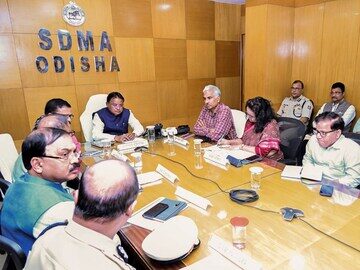
3. District Disaster Management Authority (DDMA):
- Composition:
- Chaired by the District Collector/Deputy Commissioner.
- Includes elected representatives and officials from line departments.
- Functions:
- Preparing district-level disaster management plans.
- Coordinating relief and rehabilitation efforts during disasters.
Provisions of the Disaster Management Act, 2005
- National Plan:
- A national disaster management plan is prepared, outlining roles and responsibilities for various agencies during disasters.
- Focuses on risk assessment, resource allocation, and coordination.
- State and District Plans:
- State and district authorities are mandated to prepare their respective disaster management plans.
- Plans emphasize vulnerability assessments and mitigation measures.
- Funding Mechanisms:
- Establishes disaster-specific funds at national, state, and district levels:
- National Disaster Response Fund (NDRF).
- State Disaster Response Fund (SDRF).
- District Disaster Response Fund (DDRF).
- Establishes disaster-specific funds at national, state, and district levels:
- Emergency Powers:
- Grants authority to governments to requisition resources, impose restrictions, and evacuate populations during disasters.
- Penalty Provisions:
- Includes penalties for non-compliance with directives related to disaster management.
Significance of the Disaster Management Act, 2005
- Institutionalization of Disaster Management:
- Provides a structured and institutionalized approach to disaster preparedness and response.
- Proactive Focus:
- Shifts the focus from reactive relief measures to proactive disaster risk reduction.
- Integrated Framework:
- Ensures collaboration between central, state, and district authorities, along with private stakeholders and NGOs.
- Community Participation:
- Encourages community involvement through awareness programs and capacity-building initiatives.
- Legal Backing:
- Provides legal authority to enforce disaster management measures, ensuring accountability.
Limitations of the Disaster Management Act, 2005
- Over-Centralization:
- Heavy reliance on national-level policies may not address local vulnerabilities effectively.
- Insufficient Emphasis on Mitigation:
- While the Act focuses on response and recovery, mitigation and resilience-building efforts require more robust provisions.
- Implementation Challenges:
- States and districts often face resource and capacity constraints in implementing disaster management plans.
- Lack of Private Sector Involvement:
- Limited provisions for engaging private companies and industries in disaster risk reduction efforts.
Case Study: Implementation During COVID-19
The Disaster Management Act, 2005 was invoked during the COVID-19 pandemic in 2020 to manage the crisis. The NDMA and SDMAs played a pivotal role in enforcing lockdowns, mobilizing resources, and coordinating efforts across states. The Act provided a legal framework for:
- Ensuring compliance with public health directives.
- Mobilizing funds from the NDRF and SDRF for pandemic response.
- Coordinating between central and state governments to manage healthcare facilities and supply chains.
Conclusion
The Disaster Management Act, 2005 is a cornerstone of India’s disaster management framework, emphasizing a holistic approach to disaster preparedness, mitigation, and response. While the Act has significantly improved India’s capacity to handle disasters, there is room for further refinement, especially in mitigation measures and local-level empowerment. Its successful implementation during emergencies like Cyclone Phailin (2013) and the COVID-19 pandemic underscores its importance in safeguarding lives and promoting resilience.

Also Read Current Affairs Notes :
- Millennium Development Goals (MDGs): A Comprehensive Analysis
- The Chipko Movement: Hugging Trees to Save the Planet
- Global Efforts to Save Endangered Vaquita Porpoise
- 40% of the Amazon Rainforest Unprotected: Why This is Critical for Climate Change
- Reducing CO2 Emissions in India’s Transport Sector by 2050: A High-Ambition Approach
- China’s Carbon Market and Its Mechanisms
- India’s Greenhouse Gas Emissions Increase Since 2021
- Mankidia Community Becomes the 6th PVTG to Get Habitat Rights Over Forests in Odisha
- Indian Megacities Lag in Air Pollution Control Despite Lion’s Share of Financial Support
- Sustainable Development Goals (SDGs): Relevance in UPSC Mains and Prelims
- Water Security in India: Challenges and Solutions
- Sustainable Development Goals (SDGs): A Comprehensive Analysis 2025
- 2030 Agenda for Sustainable Development: A Comprehensive Analysis


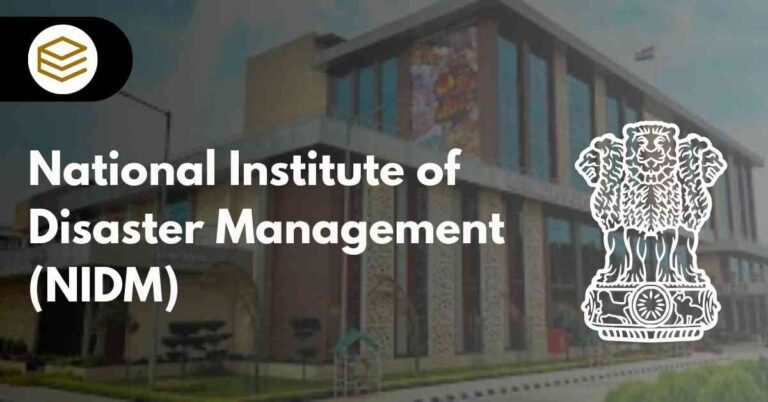
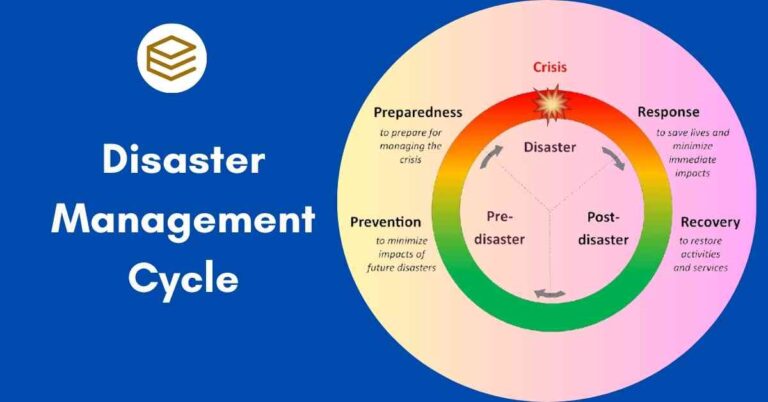
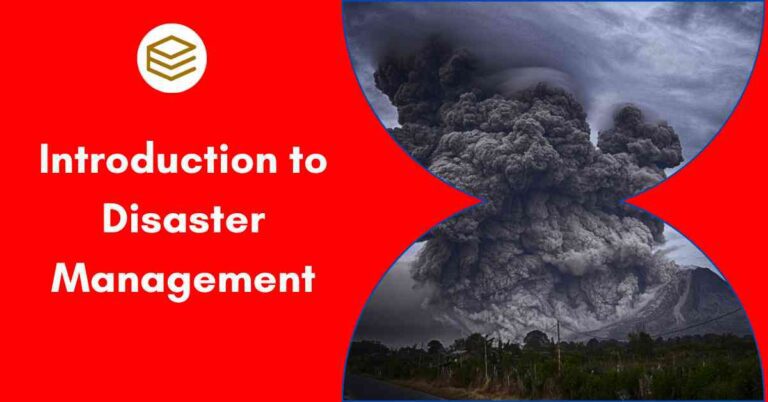
Very good. but The permanent work should be provided to the volunteers of the Aapda Mitra
I’m not that much of a online reader to be honest but your sites really nice, keep it
up! I’ll go ahead and bookmark your site to come back later
on. Many thanks
Have a look at my web page nordvpn coupons inspiresensation